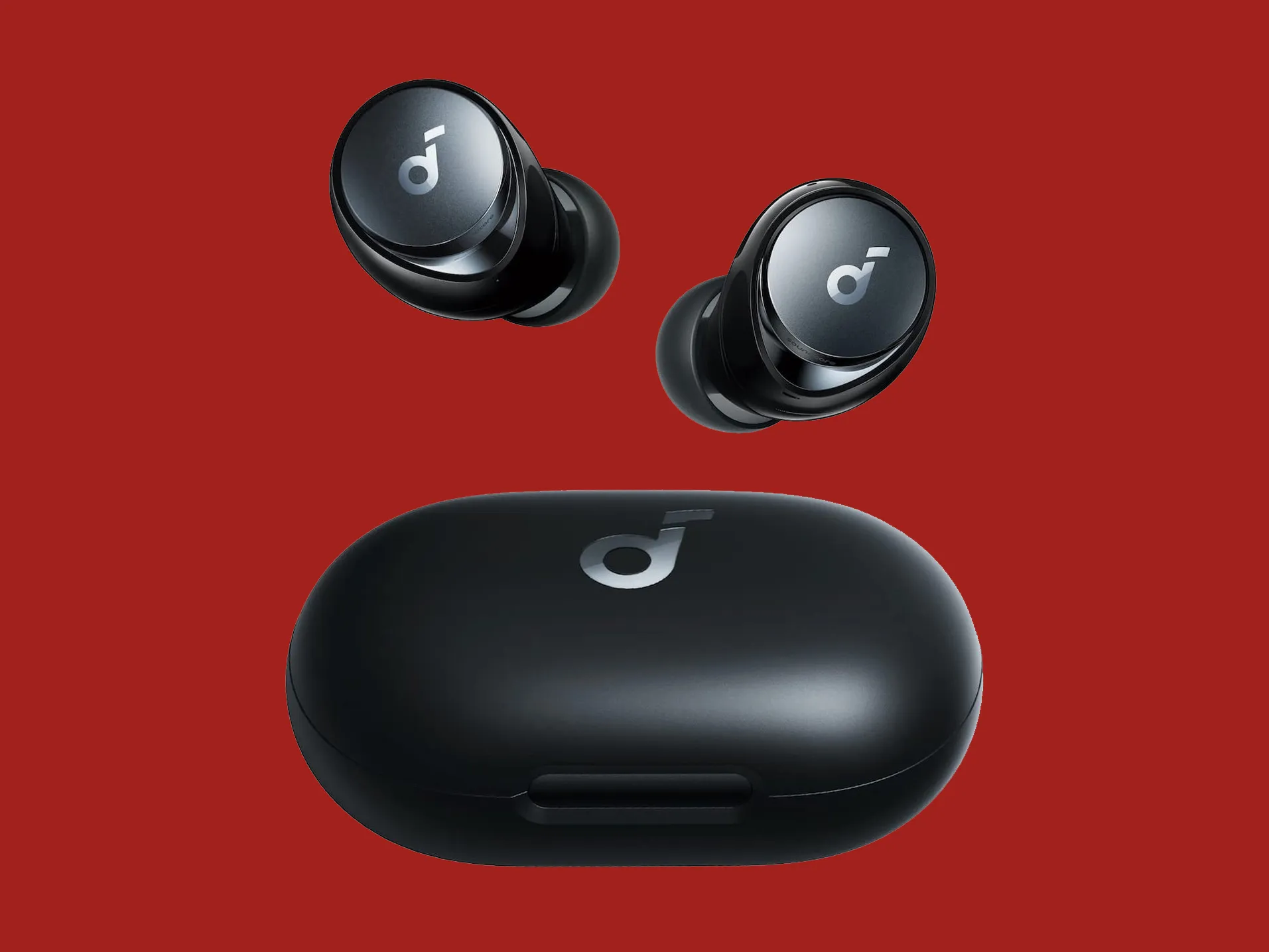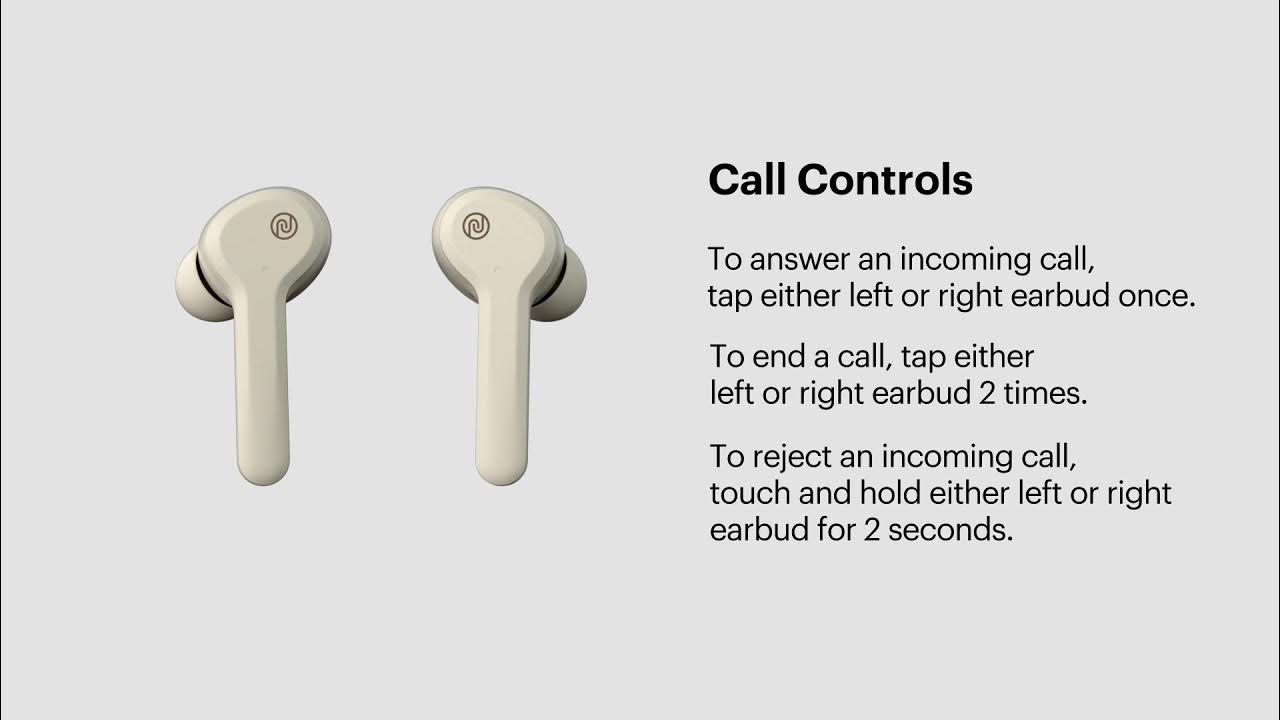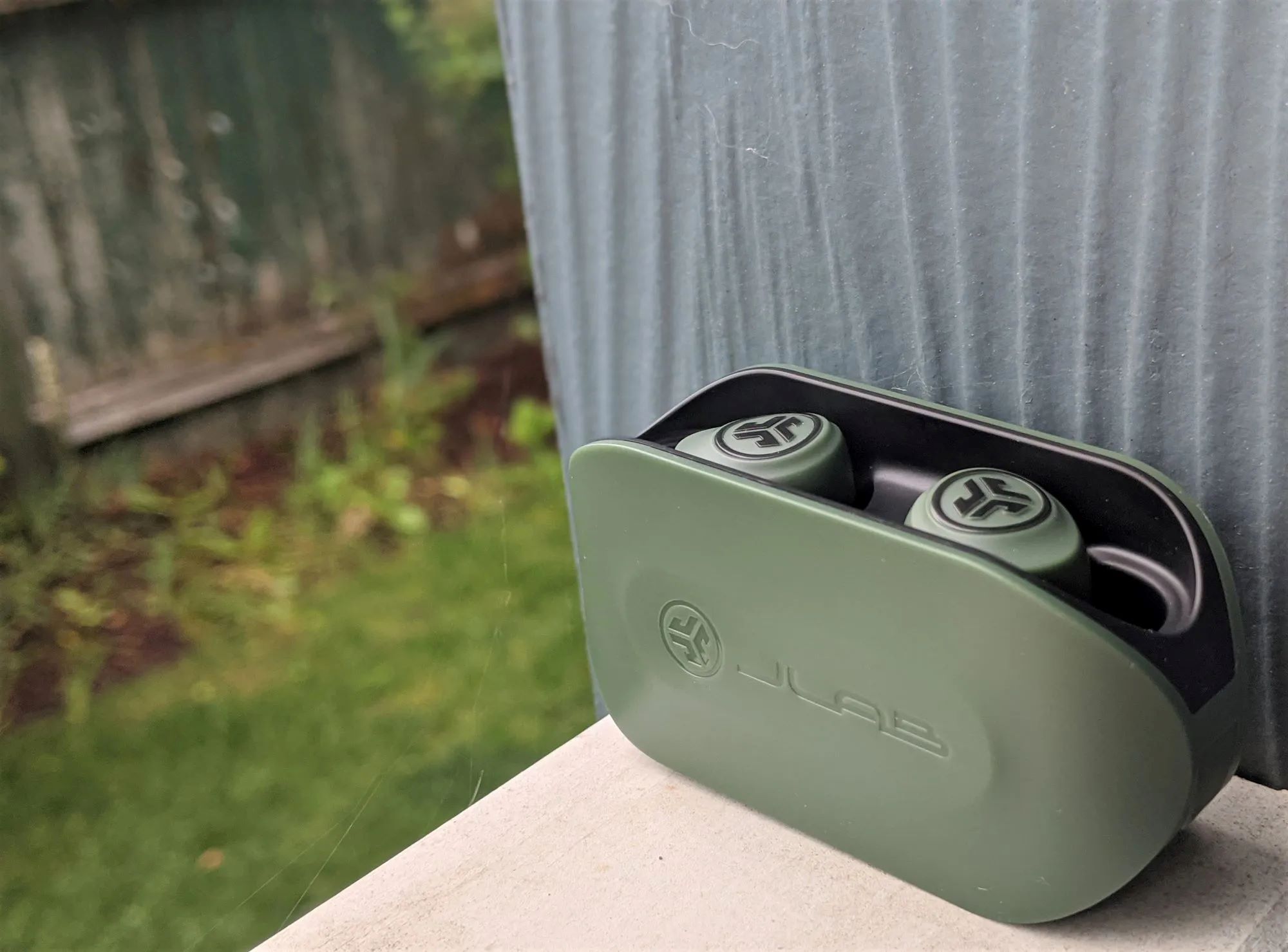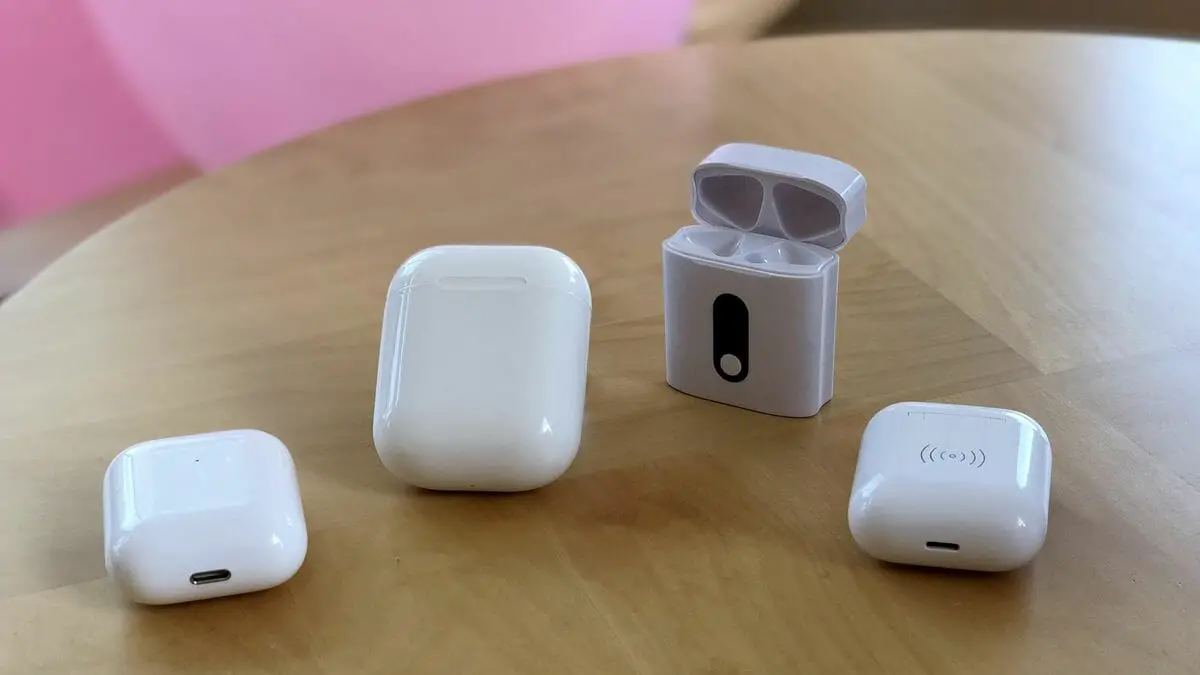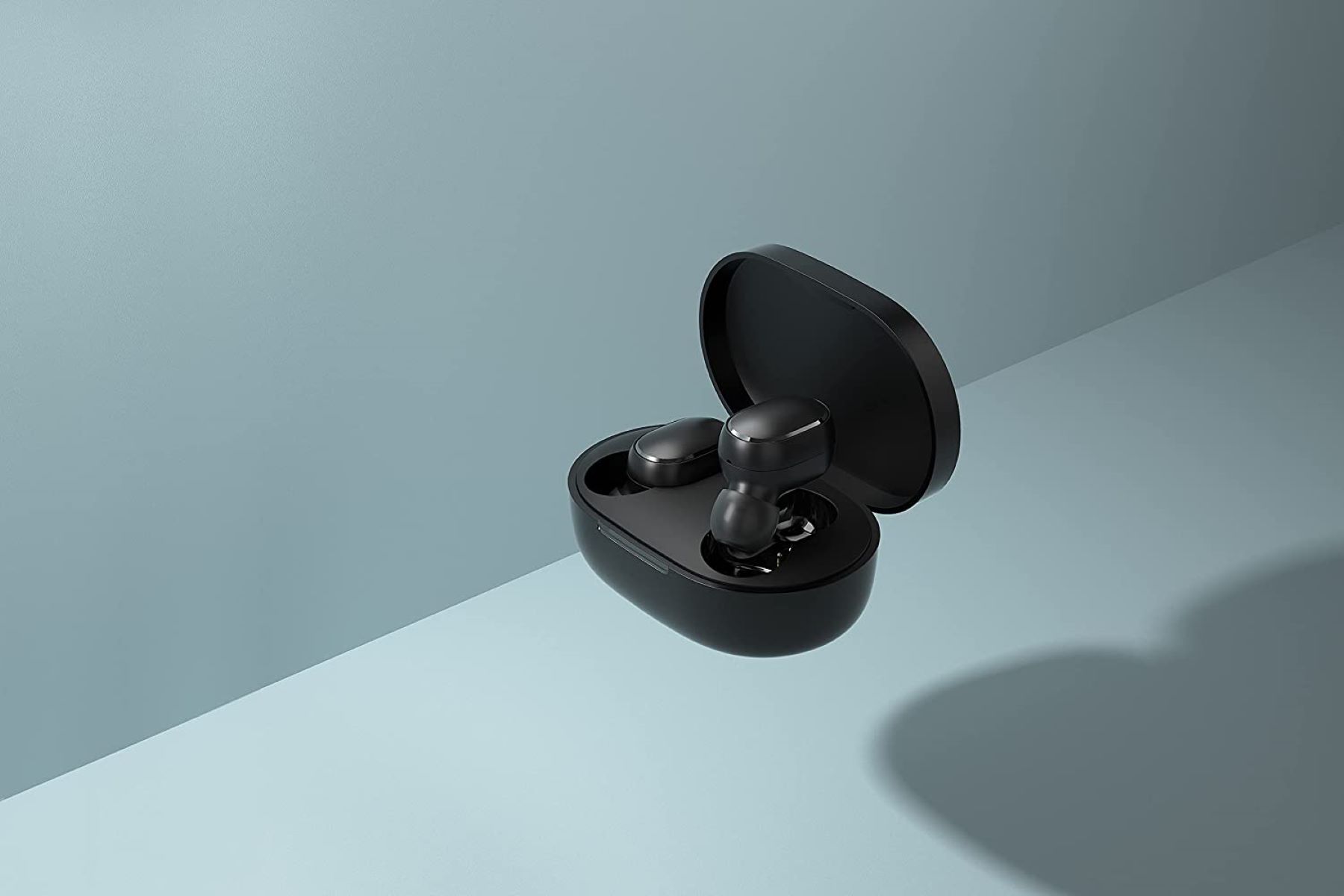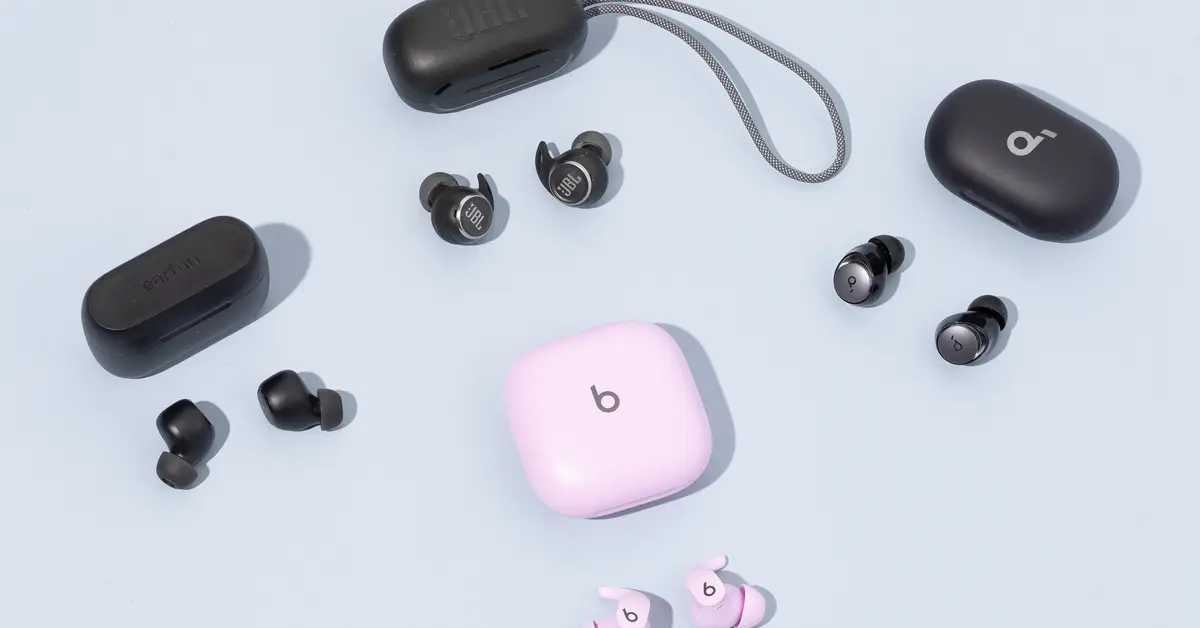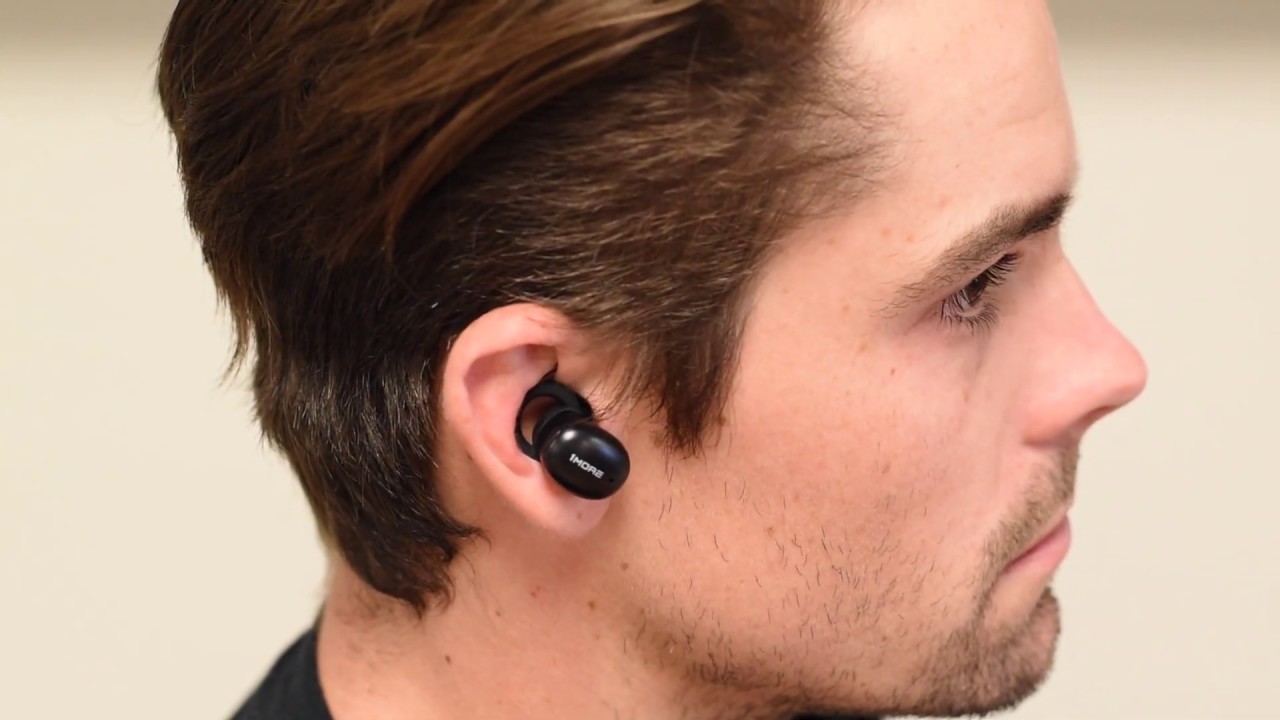Introduction
Welcome to the world of wireless earbuds, where the freedom to enjoy music and podcasts without the tangle of wires has become a reality. In today’s tech-savvy era, wireless earbuds have become increasingly popular due to their convenience, portability, and enhanced audio quality. These tiny gadgets have revolutionized the way we listen to our favorite tunes, making them a must-have accessory for music enthusiasts and on-the-go individuals.
Wireless earbuds, as the name suggests, are earphones that do not require any physical connection to your device. Unlike traditional earphones that connect through a wire, wireless earbuds connect to your smartphone, tablet, or other devices via Bluetooth technology. This wireless connection frees you from the hassle of tangled cords and allows greater mobility while enjoying your audio content.
In this article, we will explore the fascinating world of wireless earbuds, diving into how they work and the various features they offer. We will discuss the underlying technology that powers these devices, including Bluetooth connectivity, sound transmission and quality, battery life, control buttons, noise cancellation technology, water and sweat resistance, and more.
Understanding how wireless earbuds work is crucial for anyone looking to invest in a pair. Whether you’re a fitness enthusiast looking for earbuds that can withstand your intense workouts, a traveler seeking freedom from tangled wires, or an audiophile craving high-quality sound, this guide will provide insights into the inner workings of these remarkable gadgets.
So, if you’re ready to embark on a journey to discover the wonders of wireless earbuds, join us as we unravel the mysteries behind these small yet powerful audio companions.
Overview of wireless earbuds
Wireless earbuds have become wildly popular in recent years, offering a slew of benefits over traditional wired earphones. These compact and lightweight devices provide users with the freedom to enjoy audio content without being tethered to their devices. Whether you’re working out, commuting, or simply relaxing at home, wireless earbuds are designed for convenience and portability.
One of the significant advantages of wireless earbuds is their compact size. Unlike bulky headphones or wired earphones, wireless earbuds can easily fit into your pocket or a small carrying case, making them ideal for people on the go. They are lightweight, comfortable to wear, and don’t occupy much space, ensuring a hassle-free experience.
When it comes to connectivity, wireless earbuds utilize Bluetooth technology to establish a wireless connection with your device. Bluetooth enables seamless pairing between your earbuds and smartphone, tablet, or other compatible devices. Once connected, you can enjoy a wireless audio experience without any interruptions caused by tangled cords or limited range.
Another essential feature of wireless earbuds is their versatility. They are compatible with a wide range of devices, including smartphones, tablets, laptops, and smart TVs. This versatility allows you to seamlessly switch between devices and enjoy your favorite audio content wherever you go.
Most wireless earbuds come equipped with built-in microphones, enabling you to make and receive phone calls without the need to take out your smartphone. This hands-free calling feature is particularly useful when you’re on the move or need to multitask while staying connected.
Furthermore, wireless earbuds often come with touch-sensitive controls, allowing you to adjust the volume, skip tracks, and activate voice assistants with just a few taps or gestures on the earbuds. This intuitive functionality enhances the overall user experience and eliminates the need to reach for your device to control your audio playback.
Overall, wireless earbuds offer a seamless and convenient audio experience. With their compact design, wireless connectivity, versatility, hands-free calling, and touch-sensitive controls, they have revolutionized the way we enjoy music, podcasts, and other audio content. As technology continues to evolve, wireless earbuds are expected to become even more advanced, providing an immersive and high-quality audio experience for users worldwide.
Bluetooth Technology
Bluetooth technology is the foundation that powers the wireless connectivity of earbuds and various other devices. It is a wireless communication protocol that enables the transfer of data and audio signals between devices over short distances. Developed by Ericsson in the 1990s, Bluetooth has become an industry standard for wireless communication.
For wireless earbuds, Bluetooth technology plays a crucial role in establishing a seamless connection between the earbuds and your device, be it a smartphone, tablet, or laptop. Bluetooth operates on the 2.4 GHz radio frequency band, using low-power signals to exchange data between devices. This low-power consumption ensures that the battery life of your wireless earbuds is optimized for extended use.
The Bluetooth protocol employs a technique called frequency hopping, which allows for a stable and secure connection even in the presence of other electronic devices in the vicinity. By rapidly switching between different frequencies within the designated range, Bluetooth minimizes interference from other wireless devices, ensuring a reliable audio connection.
Wireless earbuds typically use Bluetooth versions 4.0 and above, with the latest being Bluetooth 5.0. Each subsequent version of Bluetooth brings improvements in terms of data transfer speed, range, and power efficiency. Bluetooth 5.0, for example, offers faster data transfer, longer range, and improved audio quality compared to its predecessors.
In addition to providing wireless audio streaming, Bluetooth technology also enables other features in wireless earbuds. One of these features is the ability to control your audio playback and manage calls directly from the earbuds themselves. You can play/pause music, adjust volume, skip tracks, and even answer or reject calls with a single tap or swipe on the earbuds, thanks to Bluetooth connectivity.
Furthermore, Bluetooth allows for the synchronization of audio playback between both earbuds, ensuring a balanced stereo sound experience. This synchronization ensures that you can enjoy your music or podcasts in true stereo, with the sound evenly distributed between both ears.
As technology continues to advance, Bluetooth technology is constantly evolving to offer even better performance and user experience. With the latest versions of Bluetooth, wireless earbuds are now capable of delivering high-quality audio, improved battery life, and faster and more stable connections, making them a go-to choice for music lovers and tech enthusiasts alike.
How Wireless Earbuds Connect to Devices
Wireless earbuds connect to devices using Bluetooth technology, allowing for a seamless and cord-free audio experience. The process of connecting wireless earbuds to your device is generally straightforward and hassle-free.
To initiate the connection, start by turning on the Bluetooth feature on your device. This can usually be done through the settings menu, where you’ll find an option to enable Bluetooth. Once enabled, your device will begin scanning for nearby Bluetooth devices, including your wireless earbuds.
Next, put your wireless earbuds into pairing mode. This is typically done by pressing and holding a designated button or combination of buttons on the earbuds. When in pairing mode, the earbuds emit a signal that your device can detect.
On your device, you’ll see a list of available Bluetooth devices. Look for the name of your wireless earbuds in the list and tap on it to start the pairing process. Once selected, a connection is established between the device and the earbuds.
After a successful pairing, your device will recognize the wireless earbuds as the default audio output. Any audio played on your device, such as music, podcasts, or videos, will now be streamed to your wireless earbuds wirelessly.
Many wireless earbuds also have the feature of automatic pairing. Once you’ve initially paired your earbuds with a device, they will automatically connect to that device whenever they are turned on and within range. This eliminates the need to manually connect each time you want to use your earbuds.
In some cases, wireless earbuds may offer multipoint connectivity, allowing you to connect them to multiple devices simultaneously. This feature is particularly useful if you frequently switch between devices. For example, you can connect your earbuds to both your smartphone and laptop, and seamlessly switch between them without the hassle of re-pairing.
It’s important to note that the range of Bluetooth connectivity may vary depending on the specific earbuds and devices being used. Generally, the range is within 33 feet (10 meters), but certain factors like obstacles and electromagnetic interference can affect the signal strength and distance.
As wireless technology continues to advance, the process of connecting wireless earbuds to devices is becoming increasingly seamless. Manufacturers are constantly working on improving the pairing process and enhancing the reliability of Bluetooth connections, offering users a seamless and hassle-free experience.
Sound Transmission and Quality
When it comes to wireless earbuds, sound transmission and quality are paramount. These devices rely on advanced technology to deliver high-fidelity audio and an immersive listening experience.
Wireless earbuds use Bluetooth technology to transmit audio signals from your device to the earbuds. The audio data is compressed and then wirelessly transmitted to the earbuds, where it is decompressed and converted into electrical signals that can be converted into sound waves by the earbuds’ drivers.
The quality of the sound transmitted through wireless earbuds can vary depending on different factors, such as the audio codec used and the earbud’s driver and audio processing capabilities.
One of the crucial aspects that determine sound quality is the audio codec. Bluetooth earbuds commonly support various audio codecs, including SBC (Subband Coding) and AAC (Advanced Audio Coding), with some models even supporting higher-quality codecs like aptX and LDAC.
SBC is the standard audio codec for Bluetooth, providing decent sound quality but with some loss in audio fidelity due to the compression. On the other hand, AAC offers better audio quality and is often preferred by Apple devices, as it is natively supported.
Higher-quality codecs like aptX and LDAC deliver even better audio performance, offering near-lossless or even lossless audio transmission. However, it’s important to note that both the earbuds and the connected device must support the same codec in order to take advantage of its benefits.
In addition to the audio codec, the driver size and quality play an essential role in determining sound quality. Earbuds with larger drivers tend to produce richer, more powerful bass and better overall sound reproduction. Different earbuds may also employ various audio enhancement technologies, such as equalizers or sound profiles, to further optimize the sound output based on users’ preferences.
It’s worth mentioning that sound quality can also be influenced by the fit and seal of the earbuds in the ear canal. A proper seal ensures better noise isolation, improved bass response, and overall sound clarity. Some wireless earbuds come with different sizes of ear tips to accommodate different ear sizes and shapes, allowing users to find the perfect fit for optimal sound quality.
All in all, wireless earbuds have come a long way in terms of sound transmission and quality. With advancements in audio codecs, driver technology, and audio processing, wireless earbuds can deliver immersive sound experiences and reproduce music, podcasts, and other audio content with impressive clarity and detail.
Battery Life and Charging
Battery life is a critical aspect to consider when it comes to wireless earbuds, as it determines how long you can enjoy your audio content before needing to recharge. The battery life of wireless earbuds can vary significantly depending on various factors, such as usage patterns, audio playback volume, and the capacity of the earbuds’ battery.
Typically, wireless earbuds offer several hours of continuous playtime on a single charge. The average battery life ranges from 4 to 6 hours, with some high-end models boasting even longer playtime. However, it’s important to note that battery life can be shorter when features like active noise cancellation or high-volume playback are utilized.
In addition to the earbuds themselves, many wireless earbuds come with a charging case. The charging case serves two purposes: providing a safe and convenient storage solution for the earbuds when not in use and extending the battery life of the earbuds by offering additional charges on the go.
The charging case is equipped with its own built-in battery, which can recharge the earbuds multiple times, extending the total playtime. The capacity of the charging case battery varies between models, with some cases providing a single additional charge and others offering multiple charges before needing to be recharged themselves.
Charging wireless earbuds is usually achieved by placing them inside the charging case and connecting the case to a power source using a USB cable. The earbuds are automatically charged when they are inserted into the case and the case is connected to a power supply.
The charging time for wireless earbuds varies depending on the specific model and the charging method. On average, it takes around 1 to 2 hours to fully charge the earbuds from empty to full power. Some newer models also offer quick charging capabilities, allowing for a few hours of playtime with just a short charging session of 10 to 15 minutes.
It’s worth noting that there are also wireless earbuds available with wireless charging capabilities. These earbuds can be charged using compatible wireless charging pads or mats, eliminating the need for any cables. Wireless charging provides convenience and a clutter-free charging experience.
When it comes to maximizing battery life, some wireless earbuds offer power-saving features like automatic power-off when not in use or the ability to disable certain features like Active Noise Cancellation (ANC) to conserve power. Keeping the earbuds in the charging case when not in use can also help preserve battery life and ensure they are always ready for use.
Battery life is an essential consideration when choosing wireless earbuds, as it determines the duration you can enjoy your audio content without interruption. By understanding the battery life of different models and considering your usage patterns and needs, you can select wireless earbuds that provide the right balance between battery life and performance.
Control Buttons and Features
Wireless earbuds come equipped with a variety of control buttons and features that enhance the user experience and provide convenient control over audio playback and calls.
Many wireless earbuds have physical buttons or touch-sensitive surfaces on each earbud. These buttons allow you to perform various actions, such as play/pause, skip tracks, adjust volume, and answer/reject calls.
The specific placement and functionality of the controls may vary between different models. Some earbuds have buttons located on the earbud itself, which you can press to activate certain functions. Others have touch-sensitive surfaces that respond to taps or swipes, providing a more seamless and intuitive user experience.
In addition to basic audio control functions, wireless earbuds often offer other features and gestures to further enhance the user experience. For example, a double-tap on the earbud may activate a voice assistant, allowing you to make voice commands and control your device hands-free. Some earbuds also support gesture controls, such as sliding up or down on the earbud surface to adjust volume or swipe left or right to skip or go back to the previous track.
The availability of these additional features and gestures depends on the specific model and brand of wireless earbuds. It’s important to check the product specifications and instructions to understand the full range of control options available.
Another useful feature found in many wireless earbuds is the ability to automatically pause the audio playback when one earbud is removed from the ear. This automatic pause feature ensures that you don’t miss a beat when you need to temporarily remove your earbuds, such as during conversations or when listening to announcements.
Some wireless earbuds also offer advanced features like active noise cancellation (ANC) or transparency mode. ANC uses built-in microphones to detect external noise and generates an opposite sound wave to cancel out the background sounds, providing a more immersive and uninterrupted audio experience. Transparency mode, on the other hand, allows you to hear the surrounding sounds without removing the earbuds, making it helpful for situations where you need to be aware of your surroundings.
Additionally, certain wireless earbuds are equipped with water and sweat resistance, making them suitable for workouts or outdoor activities. These earbuds often come with an IP rating (Ingress Protection rating) that indicates their level of resistance to dust and water. While not all wireless earbuds offer water resistance, those that do can withstand exposure to sweat, rain, and even submersion in water up to a certain depth for a limited time.
By utilizing control buttons and taking advantage of the various features and functions, wireless earbuds offer a convenient and customizable audio experience. Whether it’s controlling playback, activating voice assistants, adjusting volume, or even enjoying advanced features like ANC, wireless earbuds provide users with easy access to a range of controls right at their fingertips or with a simple swipe or tap.
Noise Cancellation Technology
Noise cancellation technology is a popular feature found in many wireless earbuds, designed to enhance the listening experience by reducing unwanted external noise, allowing you to immerse yourself fully in your audio content.
Active Noise Cancellation (ANC) is the most common type of noise cancellation technology found in wireless earbuds. ANC works by using built-in microphones to detect and analyze external sounds, such as traffic noise, background chatter, or the hum of an airplane engine. It then generates an opposite sound wave that cancels out the incoming noise, effectively reducing its impact on your audio experience.
ANC is particularly effective in eliminating continuous low-frequency sounds, such as the constant drone of an airplane engine or the rumble of a train. By reducing these ambient sounds, ANC allows you to enjoy your music or podcasts without distractions, creating a more immersive listening experience.
Some wireless earbuds offer different levels of ANC, allowing you to adjust the intensity of noise cancellation according to your preference or the environment you’re in. This flexibility gives you the option to enjoy complete silence or let in some outside sound if needed, enhancing the versatility of the earbuds.
It’s important to note that ANC is most effective at reducing constant or predictable sounds. Sudden or impulsive sounds, such as a door slamming or a car horn honking, may still be audible to some extent, as ANC technology may not have enough time to react and generate the opposing sound wave in real-time.
Another type of noise cancellation technology growing in popularity is Transparency Mode. While ANC blocks out external sounds, Transparency Mode allows you to hear the surrounding environment without removing the earbuds. This is achieved by using the built-in microphones to capture external sounds and pass them through to your ears, allowing for conversations, announcements, or situational awareness while still wearing your earbuds.
It’s worth mentioning that not all wireless earbuds offer noise cancellation technology. If noise cancellation is an essential feature for you, be sure to check the product specifications to ensure the earbuds you choose include this capability.
Noise cancellation technology enhances the overall audio experience of wireless earbuds, providing a way to block out unwanted noise and focus on the audio content you love. Whether you’re on a noisy commute, working in a bustling environment, or simply seeking a quiet moment to enjoy your favorite music, ANC can be an invaluable feature that helps you tune out distractions and immerse yourself in the sounds you love.
Water and Sweat Resistance
Water and sweat resistance have become sought-after features in wireless earbuds, allowing users to enjoy their favorite tunes without worrying about damage caused by moisture or intense workouts. These features provide added durability and peace of mind, making wireless earbuds suitable for various activities, including sports and outdoor adventures.
Earbuds that come with water and sweat resistance are designed to withstand exposure to moisture without compromising their functionality or audio quality. They are typically given an Ingress Protection (IP) rating that indicates their level of resistance.
The IP rating consists of two numbers, with the first digit representing resistance to solid particles and the second digit representing resistance to liquid particles. For example, an IPX6 rating means the earbuds are dust-tight (6) and can withstand powerful water jets (X).
Water resistance ensures that wireless earbuds remain functional even when exposed to splashes, rain, or accidental water contact. This means you can wear them confidently during light outdoor activities or workouts, without the fear of damage due to sweat or small water incidents.
Some water-resistant wireless earbuds can handle more extreme conditions and offer an IPX7 rating, which means they can be submerged in water up to a certain depth for a specified amount of time. This level of protection makes them suitable for activities such as swimming or intense workouts where heavy sweating or exposure to water is expected.
When it comes to sweat resistance, wireless earbuds with this feature can withstand the corrosive effects of sweat, which can be damaging to electronic components over time. Sweat-resistant earbuds are specifically designed to resist moisture, offering added durability and longevity.
However, it’s important to note that water and sweat resistance do not guarantee full waterproofing or the ability to withstand all liquid-related incidents. It’s still recommended to follow the manufacturer’s guidelines and avoid submerging the earbuds in water for extended periods or exposing them to excessive moisture beyond their specified resistance level.
Even with water and sweat resistance, it’s advisable to dry the earbuds thoroughly after exposure to water or sweat to prevent any residual moisture from affecting the electronics over time. Additionally, maintaining good hygiene practices by regularly cleaning the ear tips and the charging case can help ensure the longevity and optimal performance of your wireless earbuds.
Wireless earbuds with water and sweat resistance provide the flexibility to incorporate music into your active lifestyle without worrying about damage from moisture. Whether you’re hitting the gym, going for a run in the rain, or simply sweating it out during a workout, water and sweat-resistant wireless earbuds offer the durability and functionality needed to keep you entertained and motivated.
Conclusion
Wireless earbuds have revolutionized the way we enjoy our audio content, providing convenience, portability, and advanced features that enhance the overall listening experience. By utilizing Bluetooth technology, these compact devices offer seamless connectivity to a wide range of devices, freeing us from the limitations of wired connections.
Throughout this article, we have explored the various aspects of wireless earbuds. We discussed their compact size and versatility, making them ideal companions for individuals on the go. We also delved into the workings of Bluetooth technology, which enables wireless connectivity between the earbuds and devices.
Furthermore, we explored important features such as sound transmission and quality, highlighting the role of audio codecs and driver technology in delivering a rich and immersive audio experience. We also discussed the significance of battery life and the convenience offered by charging cases, ensuring that wireless earbuds remain powered up and ready for use.
The control buttons and features found in wireless earbuds provide users with a seamless and intuitive way to manage audio playback and calls. Whether it’s physical buttons or touch-sensitive surfaces, these controls allow us to navigate through our music, adjust volume levels, and even activate voice assistants for a hands-free experience.
We also discussed the impact of noise cancellation technology on the audio experience, allowing users to enjoy their audio content without unwanted external distractions. Additionally, we touched upon the benefits of water and sweat resistance, which ensure that wireless earbuds can withstand various activities and environments without compromising their functionality.
As technology continues to advance, wireless earbuds are poised to provide even more sophisticated features and enhanced performance. Whether you’re a music enthusiast, a fitness fanatic, or someone who simply appreciates the convenience and freedom of wireless audio, wireless earbuds offer a world of possibilities, allowing you to enjoy your favorite tunes, podcasts, and more, wherever you go.
So, whether you’re looking to upgrade your current earphones or venture into the world of wireless audio for the first time, wireless earbuds are a compelling choice. With their sleek designs, innovative features, and growing selection, there’s an option out there that will cater to your specific needs and preferences.
Embrace the freedom, convenience, and immersive audio experience that wireless earbuds bring to your life. Say goodbye to tangled wires and restrictions, and immerse yourself in the world of wireless audio enjoyment.







